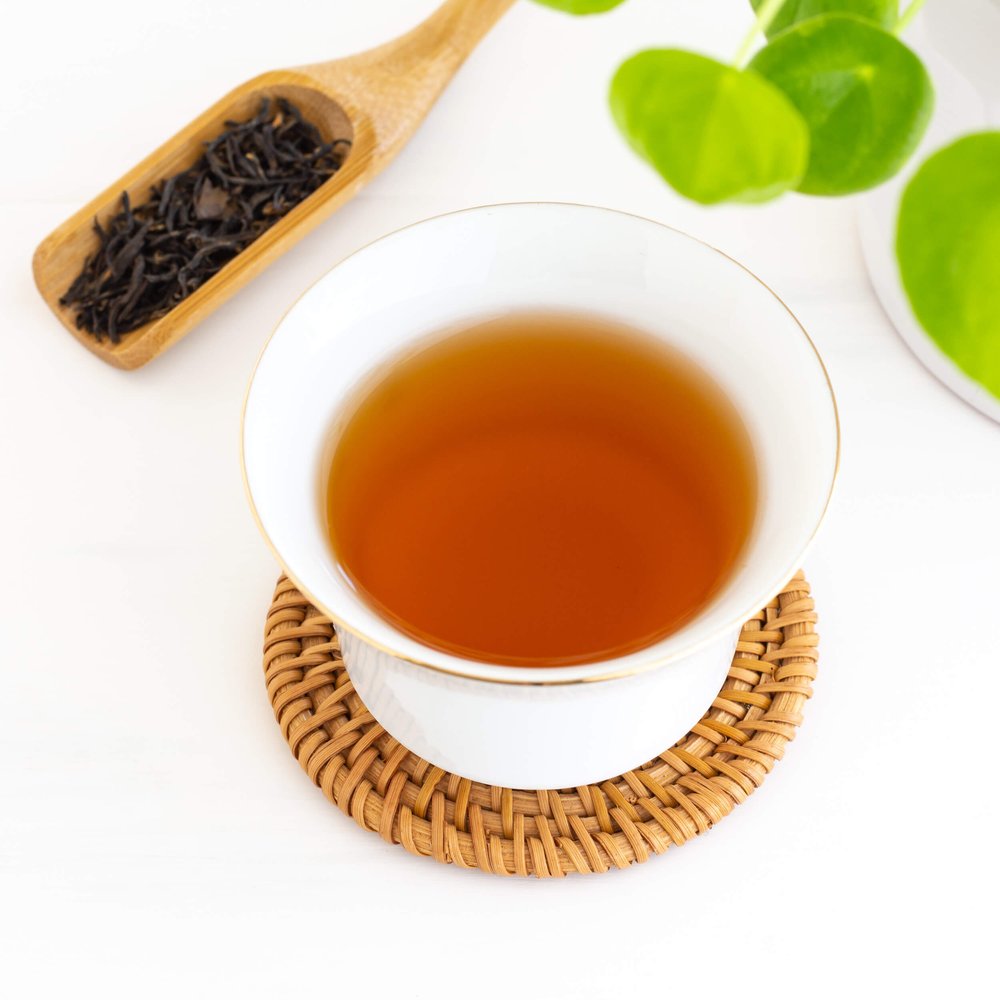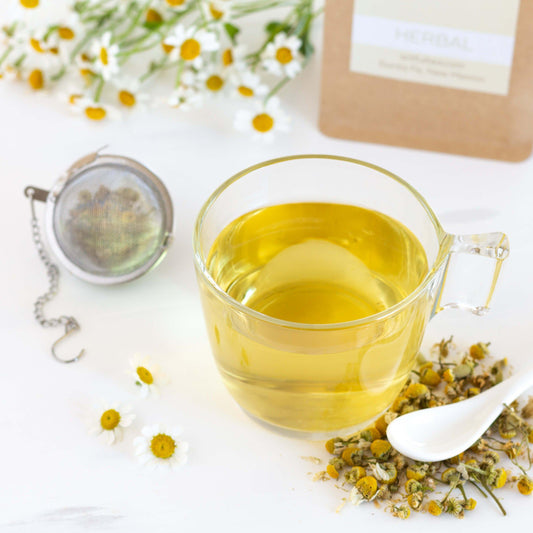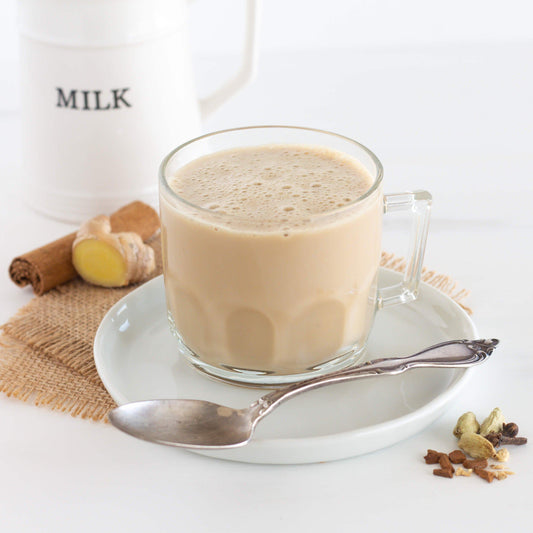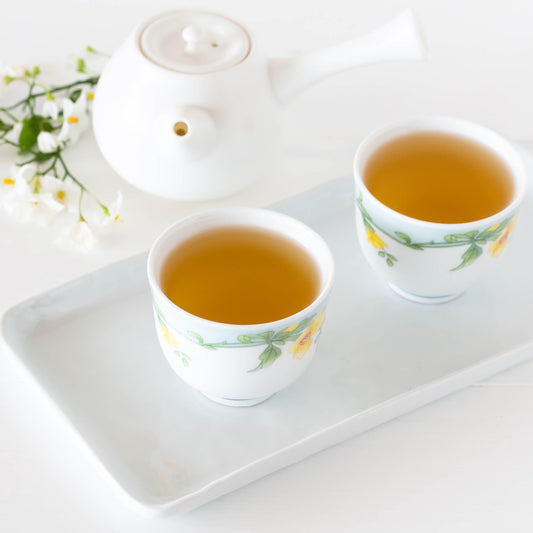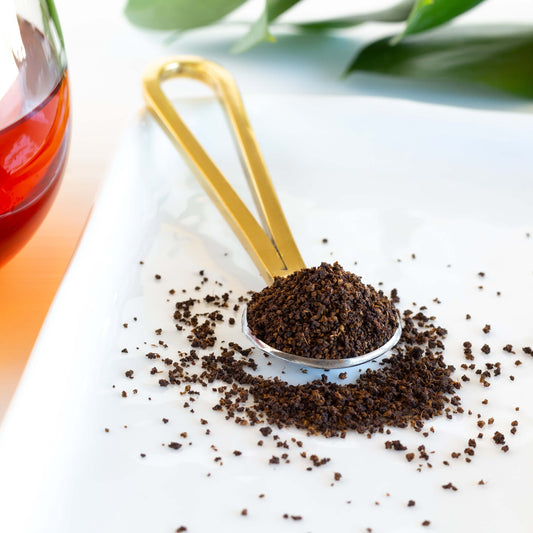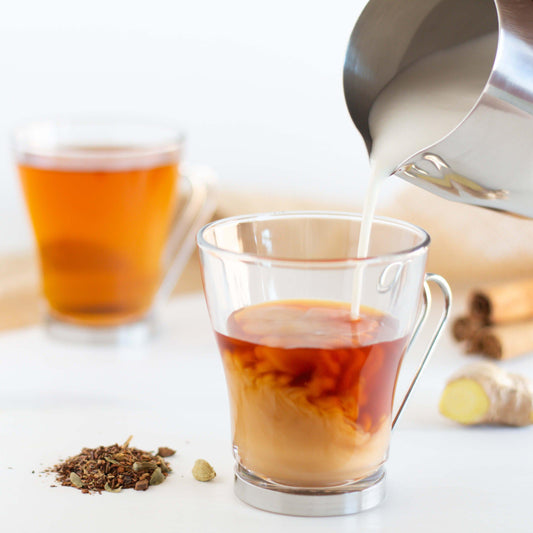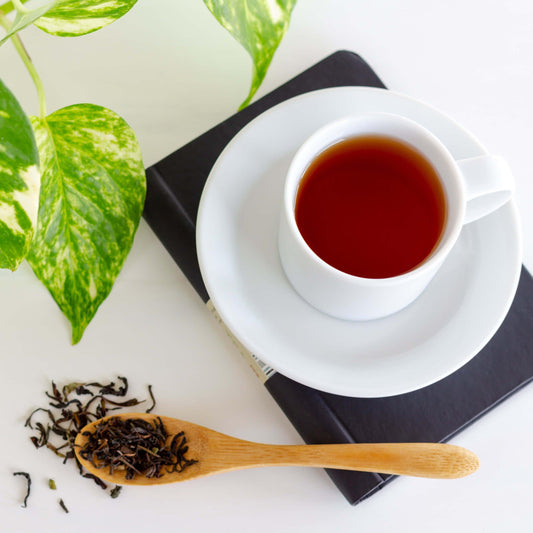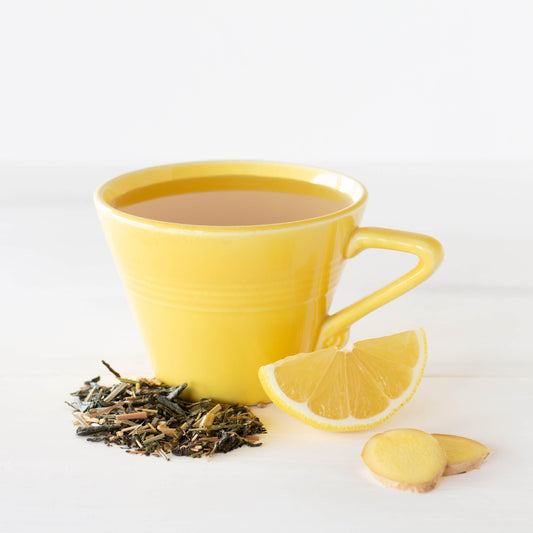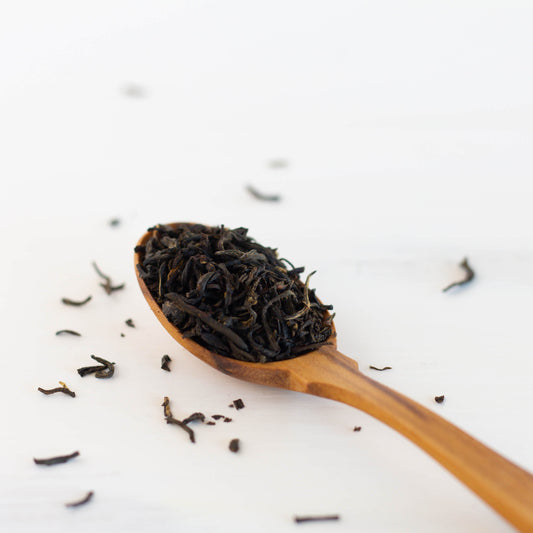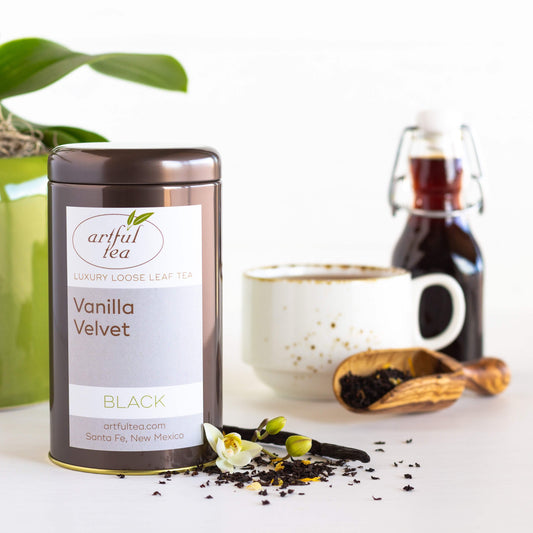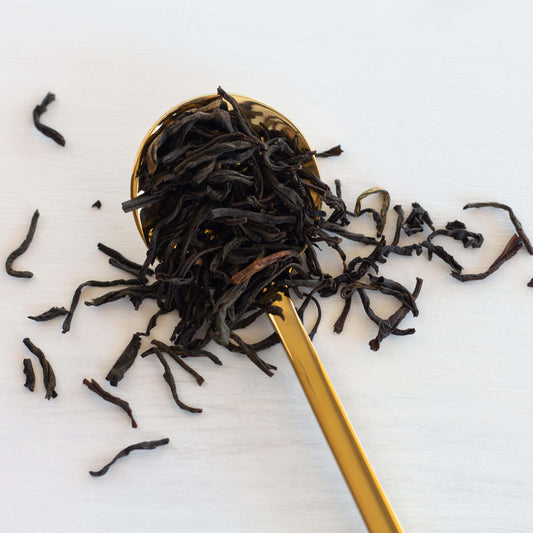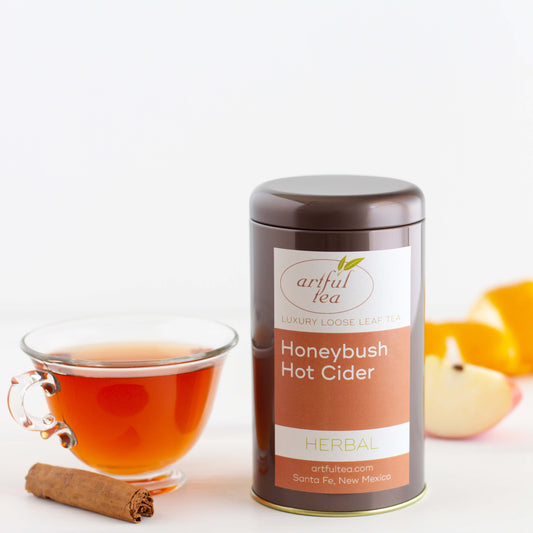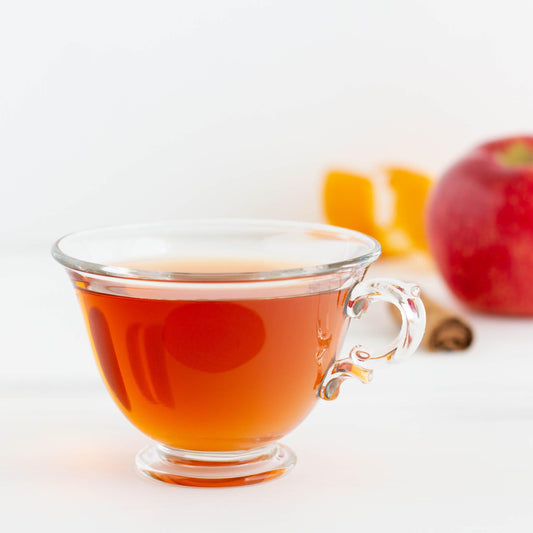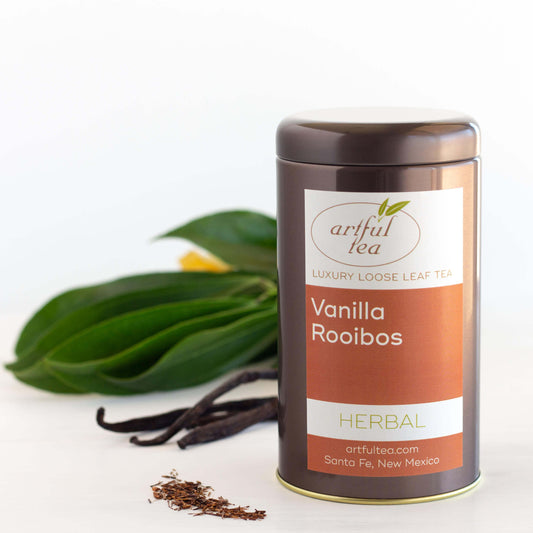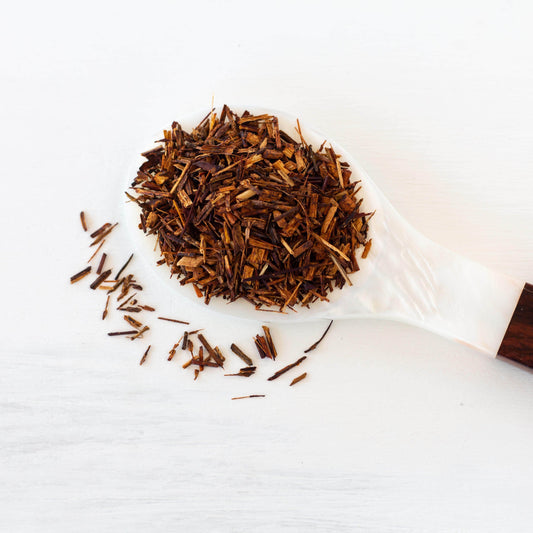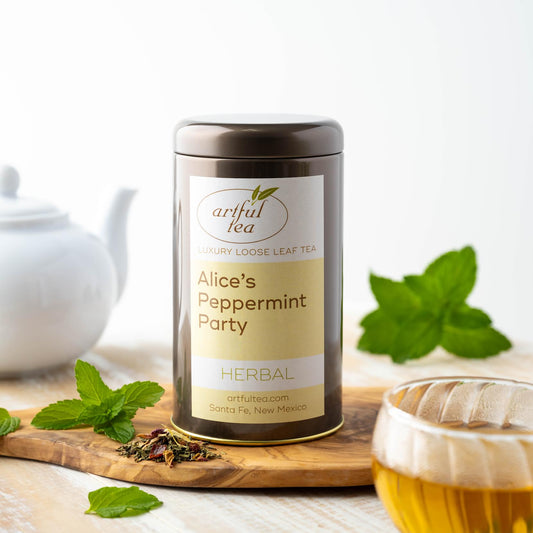The proper tea brewing temperature can range anywhere from 140 degrees for speciality green teas to 212 degrees (a full boil) for black and herbal teas, with plenty of gradations in between.
It’s important to brew teas at the proper temperature to get the best flavor from your tea. Use water that’s too hot, and you could burn delicate tea leaves, resulting in an unpleasantly bitter cup. Use water that’s too cool, and you risk ending up with a weak, less flavorful cup of tea. Here’s our guide to recommended water temperature by tea type. (All temperatures listed in this guide are in Fahrenheit.)

Tea temperature breakdown
- Black tea: 212 degrees
- Green tea: 175 to 180 degrees
- White tea: 175 to 180 degrees
- Oolong tea: 195 degrees
- Pu-erh tea: 212 degrees
- Purple tea: 175 to 180 degrees
- Herbal tea: 212 degrees
- Rooibos tea: 212 degrees
Tea temperature chart
| Tea Type | Amount of Tea Leaves | Water Temperature | Steep Time |
|---|---|---|---|
| Black | 1 level tsp. per 6oz. | full boil (212°) | 3-5 minutes |
| Green | 1 level tsp. per 6oz. | steaming briskly (175-180°) | 1-2 minutes |
| White | 2 level tsp. per 6oz. | steaming briskly (175-180°) | 2-3 minutes |
| Oolong | 1 level tsp. per 6oz. | almost boiling (195°) | 2-3 minutes |
| Pu-erh | 1 heaping tsp. per 6oz. | full boil (212°) | 5 minutes |
| Purple | 1 heaping tsp. per 6oz. | steaming briskly (175-180°) | 3 minutes |
| Mate | 1 level tsp. per 6oz. | steaming (150-160°) | 3-5 minutes |
| Herbal | 1 heaping tsp. per 6oz. | full boil (212°) | 5-10 minutes |
| Rooibos | 1 level tsp. per 6oz. | full boil (212°) | 5-10 minutes |
How to prepare loose leaf tea
Different types of tea can have very different water temperature recommendations. To get the water temperature just right, we recommend using an electric tea kettle with a temperature sensor. If you don’t have an electric kettle, you can use a stovetop kettle and pay careful attention to the water when it reaches a temperature close to a boil. If your water reaches a full boil by accident, you can always wait a few minutes for it to cool!
To prepare loose leaf tea, we recommend using a teapot, tea infuser, or tea filter. These brewing methods give the tea leaves enough room to expand as the tea steeps, resulting in a richer, more flavorful cup. Steep time is another important factor when it comes to preparing your tea - some teas have a recommended steep time of as little as one minute, while others can be infused for five minutes or more.
Tea brewing temperatures by tea type
Different tea types have different recommended water temperatures.
Black tea temperature
You should prepare black tea using water that has reached a full boil. In areas close to sea level, the water temperature at a full boil will be approximately 212 degrees. If you live at a higher elevation (like us in Santa Fe!) then your water may never quite reach that temperature even at a full boil.
Green tea temperature
We recommend brewing green tea using water that is heated to 175 to 180 degrees. This water should be steaming briskly, but not yet boiling. Some speciality green teas, like Gyokuro, should be brewed at an even lower temperature, closer to 140 degrees.
White tea temperature
White tea should be prepared using water that is 175 to 180 degrees. Like green tea, white tea is more delicate than robust black or herbal teas, so it requires a cooler water temperature in order to avoid damaging the leaves.
Oolong tea temperature
You should prepare oolong tea using water that is about 195 degrees. The water should be almost, but not quite, boiling. Oolong tea falls in between green tea and black tea; some oolongs are darker and more oxidized, like black teas, while others are lighter and more delicate, similar to green teas.
Pu-erh tea temperature
We recommend preparing pu-erh tea with water that has reached a full boil, approximately 212 degrees. Pu-erh teas are aged, partially fermented teas with a full body and a smooth, earthy flavor. They’re high in caffeine and are a great choice for coffee drinkers switching to tea.
Purple tea temperature
Purple tea should be prepared using water that is about 175 to 180 degrees. Found growing wild in the Assam region of India and now primarily grown in Kenya, purple tea is a new category of tea that is low in caffeine and extremely high in antioxidants.
Herbal tea temperature
You should prepare herbal teas using water that has reached a full boil (approximately 212 degrees.) This means that there’s no need to carefully measure the temperature; you can just wait for your kettle to start boiling. Herbal teas are caffeine-free and can be infused for a longer period of time without getting bitter.
Rooibos tea temperature
Like herbal teas, rooibos teas should be prepared using boiling water with a temperature of around 212 degrees. Native to South Africa, rooibos is a full-bodied herbal tea with a nice natural sweetness. It’s a popular alternative for tea drinkers looking to steer clear of caffeine.
Mate temperature
We recommend preparing mate teas using water that is approximately 150 to 160 degrees. Native to South America and popular in countries like Argentina and Chile, mate is a stimulating tea that, while not related to the true tea plant drink, does contain caffeine.
Matcha temperature
Matcha should be prepared using water that is about 175 degrees. Matcha is produced in Japan from shade-grown, stone-ground green tea leaves. Ceremonial grade matcha can be enjoyed on its own, while culinary grade matcha is a good pick for smoothies and tea lattes.
Why brewing temperature matters
It’s important to brew tea with water that is the correct temperature. If you use water that is too hot, you could burn the tea leaves, while using water that is too cool can make your tea seem weak and bland. The water temperature can also influence the caffeine content in tea. Using water that is the perfect temperature for your tea is a great way to ensure a tasty cup.
That said, you don’t necessarily need any fancy equipment like an electric kettle with a temperature control. While these devices are handy, people have been brewing tea without them for hundreds of years. You can also simply pay close attention to the water in your kettle as it warms; depending on the type of tea, it may be ready when it first starts to steam, when it’s steaming briskly, or when it has reached a full boil.
FAQs
What is the right chamomile tea temperature?
You should prepare chamomile tea using water that has reached a full boil (approximately 212 degrees.) This floral herbal tea is caffeine-free and goes great with a dollop of honey.
What is the right jasmine tea temperature?
You should use water that is 175 to 180 degrees to brew jasmine green tea and jasmine white tea. Other types of jasmine tea with a black or herbal base should be brewed using boiling water.
What is the right peppermint tea temperature?
Peppermint herbal tea should be prepared with water that has reached a full boil (approximately 212 degrees.) If peppermint is added to another type of tea, you should follow the temperature guidelines for the tea base.
What is the right chai tea brewing temperature?
You should brew chai tea with a black base using water that has reached a full boil (approximately 212 degrees.)
What is the right Assam tea temperature?
Assam black tea should be prepared using boiling water with a temperature of approximately 212 degrees. Assam is a robust Indian black tea with a full body and malty notes.
